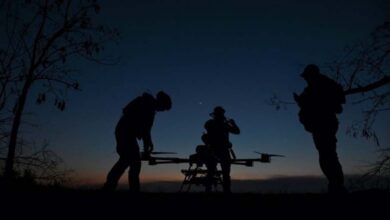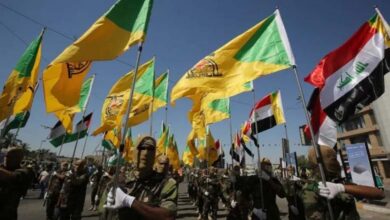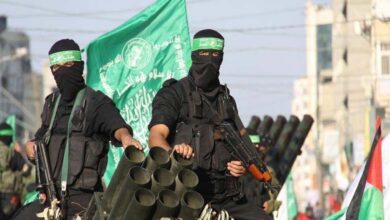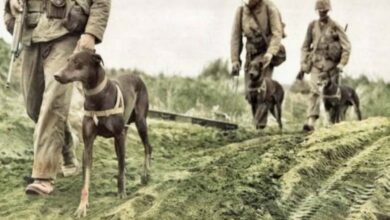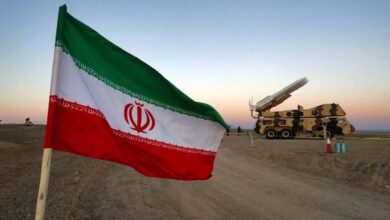Iran Responds to Turkey’s Attempt to Leverage the Helicopter Incident to Promote Its Drones
The Iranian military downplays the role of Turkish drones, claiming they failed to accurately locate the crash site of the helicopter carrying President Raisi

The General Staff of the Iranian Armed Forces on Wednesday minimized the role played by a Turkish drone in locating the crash site of the helicopter carrying the late President Ibrahim Raisi, while praising the performance of its own drones. This appears to reflect an intensifying race between the two countries for drone export markets, as Ankara attempts to seize the opportunity to market its local production.
The Turkish news agency Anadolu reported that a Turkish Akinci drone detected a “heat source suspected to be the wreckage of the helicopter carrying President Raisi” and informed the Iranian authorities of its coordinates.
The Iranian military stated, “Although Turkey sent a drone equipped with night vision cameras and thermal cameras, this drone failed to accurately locate the crash site due to the lack of cloud-piercing detection and surveillance equipment,” referring to the poor weather conditions believed to have caused the accident.
Both Iran and Turkey possess extensive drone arsenals and seek to showcase their capabilities for export markets. Western powers accuse Iran of supplying drones to Russia for its war in Ukraine.
Sources also told Reuters that the Sudanese army uses Iranian drones in its war against the Rapid Support Forces, which Tehran has denied.
The Iranian Armed Forces stated that they could not deploy their advanced drones immediately after the incident, as they were on a mission in the northern Indian Ocean, but they were recalled to assist in locating the crash site.
The Iranian news agency IRNA reported that the coordinates provided by the Turkish drones were off by seven kilometers. The military stated that it chose Turkey among the “friendly countries” to assist in the search mission due to its proximity to the crash site in the northwest of the country.
Iranian drones are used exclusively for military purposes and not for civilian uses. Iran focuses on developing attack drones aimed at enhancing its military capabilities and expanding its operations in conflict zones, to boost its regional influence.
Economic sanctions imposed on Iran are a major reason for the deterioration of Iranian drone technology, preventing Tehran from acquiring advanced aviation components and technical services, forcing it to rely on outdated and local technologies that cannot compete internationally.
Additionally, sanctions hinder Iran’s efforts to develop and maintain its drones, leading to ongoing performance and reliability issues.
Iranian drones suffer from old and undeveloped technologies, limiting their ability to perform missions efficiently. Iran relies on cloned designs of foreign drones but faces difficulties in developing advanced flight systems and electronics due to international sanctions and lack of access to advanced technologies.
One of the biggest problems facing Iranian drones is their inability to withstand harsh weather conditions.
The use of various drone models in many conflict zones around the world has increased, with low cost and high efficiency driving allied countries to acquire drones made by Tehran, such as Russia, and to supply them to allied groups like the Houthis in Yemen and some Iraqi factions.
By 2024, the Iranian military-industrial complex had produced thousands of advanced drones used for surveillance, reconnaissance, and combat against US forces and their allies in the Middle East.
These drones have become one of the main assets of the so-called “Axis of Resistance” supported by Iran, a network of armed groups in Iraq, Syria, Lebanon, and Yemen, considered one of the biggest threats to Iran’s regional opponents.
One of the key events marking the use of these weapons was the attack by pro-Tehran Iraqi factions with an Iranian-made drone on “Tower 22”, a US site in Jordan along the Iraqi-Syrian border on January 28, killing three American soldiers and wounding over 40 others. In the same month, the Houthis launched 18 Iranian-made drones at ships in the Red Sea.
These were not the first attacks using Iranian drones. In September 2019, drones and cruise missiles launched from Tehran attacked the largest oil facility in Saudi Arabia, temporarily halting nearly half of the kingdom’s oil production.
Mohammed Suleiman, director of the Strategic Technologies and Cybersecurity Program at the Middle East Institute, says there are three main players and three other countries beginning to manufacture drones in the Middle East.
Turkey ranks second after Israel, followed by Iran. According to Suleiman, Turkey began manufacturing drones based on Western designs and licenses, especially from the United States, with production largely from local materials.
The Bayraktar TB2 drone, capable of staying in the air for 24 hours at altitudes up to 25,000 feet, is the flagship of Turkish production.
Drones have been Turkey’s primary weapon in Syria since 2016 and in Libya in 2019, when Ankara sent Bayraktar drones to turn the tide against General Khalifa Haftar, who was on the verge of capturing Tripoli.
According to official Turkish data, Baykar, the drone manufacturer, signed export contracts with 27 countries in 2022, totaling $1.18 billion. Major buyers include Ukraine, Poland, Azerbaijan, Morocco, Kuwait, the UAE, Ethiopia, Turkmenistan, Kyrgyzstan, Romania, and Albania.
Israel is one of the largest producers and exporters of drones, which represented 25% of Israel’s total arms exports in 2022, according to a statement from the Israeli Ministry of Defense.


